How to find the Best Full Face Dive Masks
Full face diving masks have, until recently, been something that only commercial divers would use. They are becoming increasingly popular in the recreational scuba diving space, however.
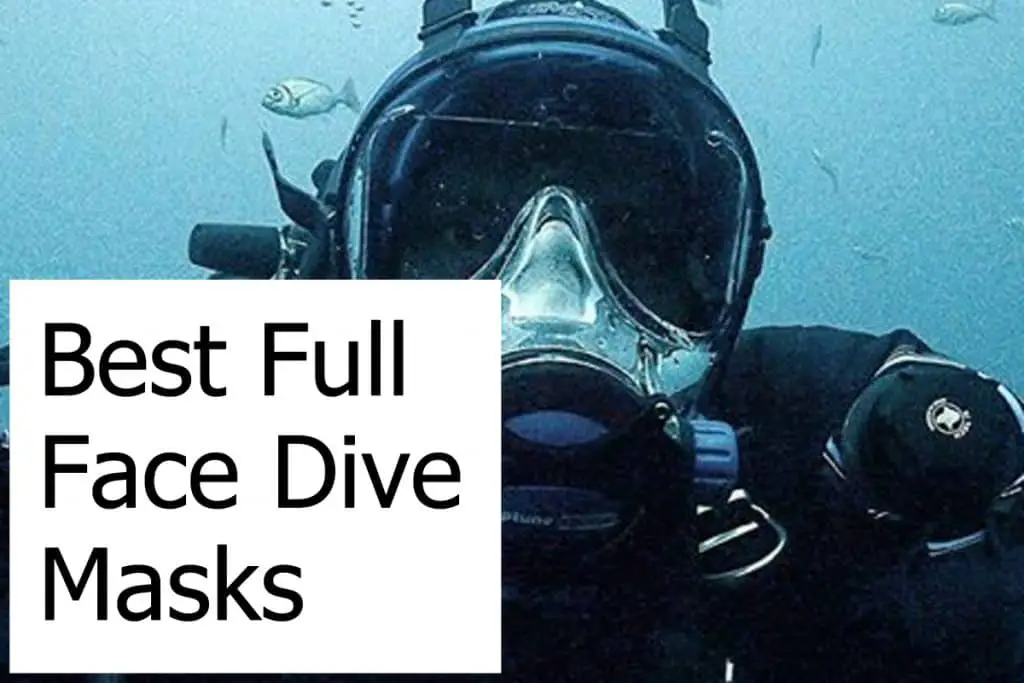
Today, even casual divers can enjoy the comfort and convenience of diving with a full-face mask. Here is a quick look at some of the most popular consumer-grade full-face scuba masks on the market today.
If you’re in a rush then here’s our list of top contenders when it comes to full-face scuba diving masks:
- Draeger Panorama Nova Dive Sport
- OTS Guardian Full Face Mask
- ScubaPro Full Face Dive Mask
- OTS Spectrum
- Ocean Reef Neptune Space G Divers
Why Choose an Integrated Diving Mask?
If you’ve never dived using a full-face diving mask before then, you may be wondering why you would want to do so. What are the differences between full-face scuba masks and a standard mask?
There’s a whole host of why you want to look into these full-face scuba masks. Have a look at a quick summary of each of the advantages.
If you’re going to dig deeper, then please check out our post on the Advantages and Disadvantages of a Full-Face Scuba Diving Mask, where we dive deeper into each part.
Pros of Integrated Dive Masks
Let’s first have a look at the advantages of why you want to consider such a mask.
Comfort
Integrated dive masks, as full-face masks are also called, are more comfortable to wear, and they have a lot of benefits. Rather than having a dive mask that covers your eyes and your nose, and then also wearing a regulator in the mouth, a full-face dive mask will combine those two elements.
Your face also stays warmer when you dive in cold water. You have less skin exposed to the cold water surrounding you which makes a dive in such an environment more comfortable.
No Jaw Fatigue
There’s no need to clamp down on the mouthpiece of the regulator. There’s more than a fair share of divers that suffer from jaw fatigue during and after a dive due to biting or clamping down to keep the regulator mouthpiece in place.
Full-face scuba diving masks do not have a mouthpiece, and you can move your jaw freely. This makes the dive experience a lot more enjoyable and jaw fatigue is a thing of the past.
Regulator always in the same place
The second stage regulator is integrated into the mask, which means that the wearer doesn’t have to “hold it” in his mouth. This tremendously reduces jaw fatigue as pointed out above. But, that’s not the only advantage of having your regulator be part of your full-face scuba mask.
There is less risk of losing the regulator while scuba diving with a full-face mask. For people with dental issues, not having to hold the regulator in the mouth can be a huge relief.
Talking while Diving
Not having anything in your mouth while you dive means that the diver can speak over a dive radio, efficiently communicating with people on the surface or with your dive buddies. Most such full face masks have optional radio setups that you can use to talk while you dive. Such a communication system does rely on both divers using the same system though! The ability to communicate efficiently can make your scuba diving safer and more enjoyable as you can communicate clearly.
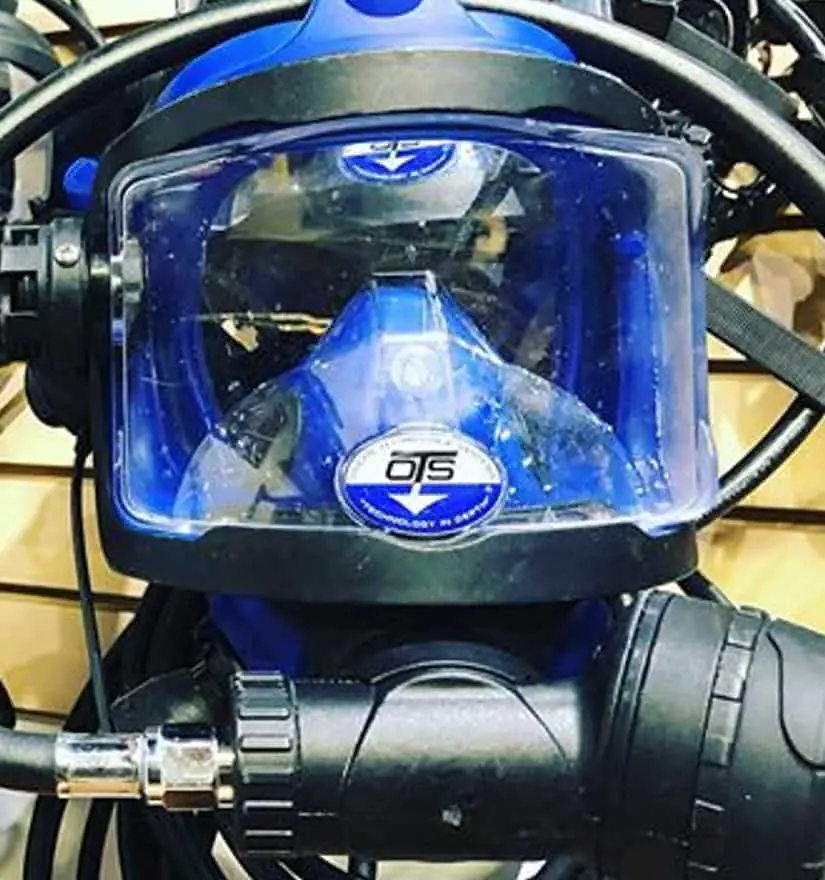
Equalizing
Equalizing pressure is easy with most of these full-face scuba masks. A full-face mask either allows you to pinch the nose or have a mechanism to enable equalizing.
Increased Visibility
These full face masks have a larger viewport offering near 180-degree vision, which means that the diver feels less confined when underwater. The same is true for full-face masks that are getting more and more popular for snorkelers.
The broader field of view makes it a lot more enjoyable to dive with such a full-face mask. You can take everything in as you see so much more. Having that larger view can also reduce the risk of panic attacks due to claustrophobia. Not feeling closed in due to the skirt surrounding your eyes can make a big difference for a lot of people when using full-face scuba masks!
Cons of Full Face Scuba Diving Masks
There are some downsides to these integrated full-face scuba masks.
Clearing flooded masks
Full face masks are far less likely to flood, but when they do flood, they are much harder to clear. There is the risk that the flooding may reach the part of the mask where the regulator is, meaning that the diver cannot breathe.
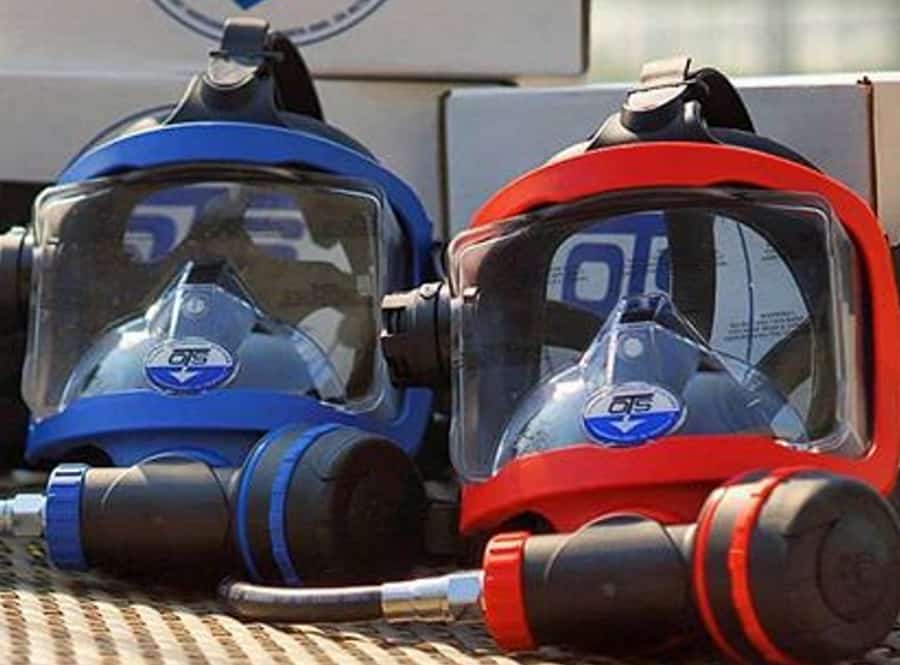
Finding the right fit
It is also harder to put the full-face mask on correctly, and if it is ever dropped or lost, then it is a critical issue. Losing a standard mask is not so much of a problem because the regulator is separate and most likely still in your mouth. In theory, you should still be tethered to a full-face mask, so it would be easy to find it underwater, but you will have to move quickly as your supply of air is gone when the mask is gone.
Equalizing
Equalizing can be an issue with an integrated dive mask if it doesn’t have a way to block your nasal passages easily. Yes, there are other ways to equalize, but most people (divers) pinch their noses and blow.
Forgetting the basics
Divers who regularly dive with IDM’s (Integrated Dive Masks) run the risk that they forget to communicate with other divers that use traditional masks and don’t have voice communication available. It’s essential to keep your ability to communicate with hand signals up-to-date even if you only dive with buddies that have full-face scuba masks!
Cost and Preventing breaks
The initial price for a full-face dive mask is higher compared to traditional diving goggles. High-end integrated masks will come with a regulator, so you save money as you don’t have to buy a second stage regulator. Overall, pricing for a high-quality dive mask and regulator should be around the same as what you have to expect for a full-face diving mask that has the regulator integrated.
Having everything in one unit is great until something breaks. If you drop the full-face diving mask or if your regulator malfunctions, then you might end up having to replace the whole integrated setup. In case of a traditional setup, you either have to replace the goggles or the regulator.

Diving Lights for Full-Face Masks
Many full-face scuba diving masks have additional features, such as diving lights and comms built-in. Others can have them added relatively easily.
If you are looking to add a diving light to your mask, then there are a few things that you should consider, including the life expectancy of the lamps, the beam angle, the brightness output, and the color temperature.
You may be inclined to think that “a light is a light.” The temperature of the light offered does make a difference in how you can see, and can also affect how quickly your eyes get tired. When you are diving, your body is under enough stress already, without adding harsh light to the experience.
Ideally, you want a hands-free light for your visor, and then you may want to carry an auxiliary light if you are going to be working underwater. Visor lights for full face masks are not always designed to be a primary light. They are more of a safety feature that will help other divers to see you, and help you to orient yourself.
Primary dive lights are useful for daytime and night-time dives in very deep water and have incredibly powerful central beams. Visor lights tend to be less bright and less focused, but this is by design. Very bright lights can cause a white-out. Think of how it looks when you have your lights on high in the fog. Primary dive lights have a focused central beam to prevent this.
Make sure it fits
When you’re choosing a dive mask, your priority should be making sure that it fits well and is comfortable, and that it will work with the rest of your diving equipment. Everything else things like communications units and lights can come later.
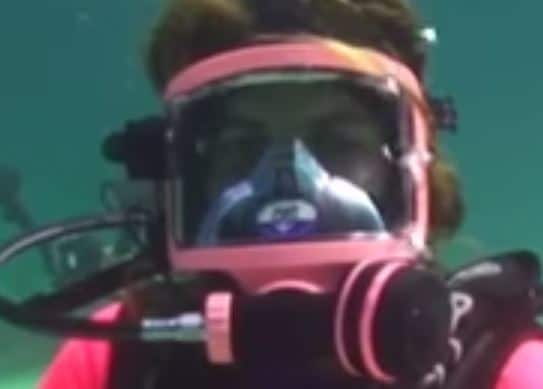
It helps if you can try the full-face scuba masks on before you buy them, but if you’re buying online, then read the descriptions carefully. Think about how each feature or specification item might affect you when you wear the full-face mask.
Some full-face masks, for example, are heavy. You probably won’t notice the weight too much when you’re in the water, but lugging it around on land could be an issue.
Pay attention to things such as the hose position, for example. A lot of divers like a second stage regulator hose set up with the hose coming out of the right-hand side, but not every full-face diving mask offers that. It would be frustrating to spend a lot of money on a dive mask only to find that the hose and regulator set up gets in the way in normal use.
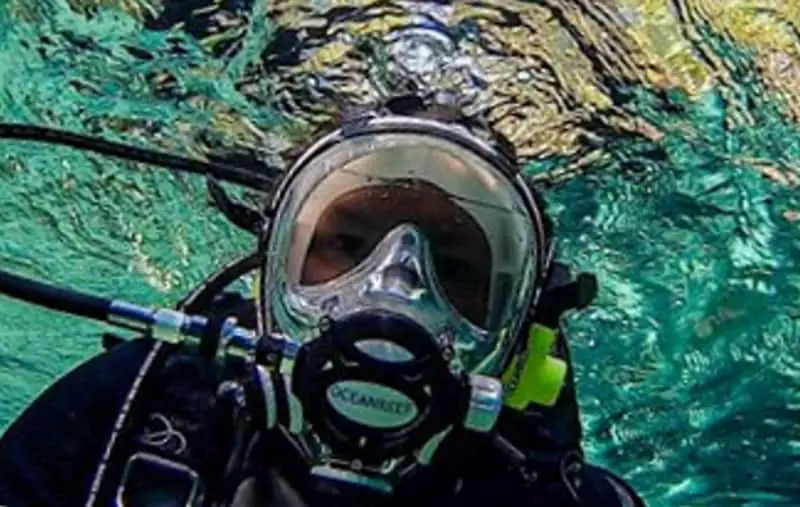
Full-Face Scuba Dive Mask Reviews
Draeger Panorama Nova Dive Sport
The Draeger Panorama Nova Dive Sport is designed for use by recreational and sports divers. It comes with all the comforts that you’d expect when going diving.
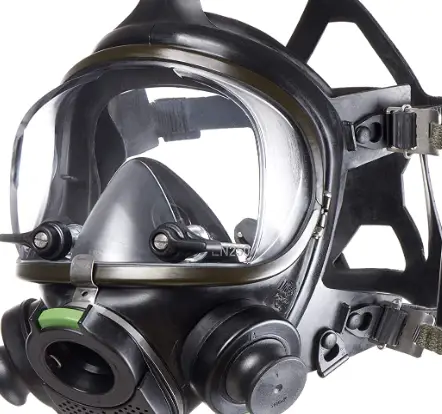
It has pretty much all of the features you’d expect from a full-face scuba mask. Certainly, starting by having a large field of view which makes it easy to see the underwater world but also helps some people not to get claustrophobic.
One of the downsides of these types of masks is that you can’t squeeze (How to prevent Mask Squeeze when diving) your nose to equalize. The Nova mask has an easy to use system that allows you to squeeze your nose so you can comfortably equalize while diving.
There are three connection ports on this full-face diving mask that can be used for the second stage regulator, as well as microphones for underwater communication. When surfaced, it’s easy to remove the regulator so you can breathe ambient air.
A great feature is that you can switch the regulator underwater if needed. The full-face scuba mask is designed not to allow any water to get into the mask while you change regulators.
It’s a well-made full face mask that will last you for a long time. The seal is tight, and the adjustments are easy and plenty. You’ll be able to fit the mask nice, tight, and comfortable for enjoyable dive trips.
OTS Guardian
OTS is a well-known brand, and OTS Guardian comes with a good viewing angle thanks to having a visor that is low profile, offering improved visibility. The full-face scuba mask includes an ABV valve, something several others lack, which helps to preserve air when the diver is on the surface.
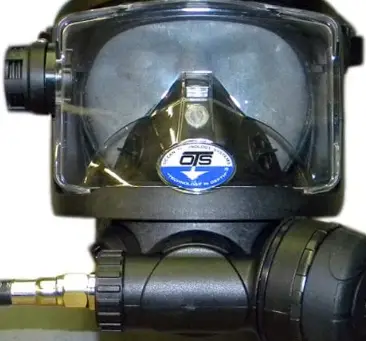
This full-face mask helps to keep your face warm when diving in cold water. It allows divers to breathe through their nose, which helps to prevent dry throats during long dives.
It is popular with smaller divers, and in particular, women, who often find that other consumer-grade full face masks are too big for them. The double seal configuration ensures that both small and large divers can wear it comfortably, and the adjustable head straps support secure fitting.
The full-face scuba mask bag is designed to protect the mask at all times, and features large drain holes and a vent screen, ensuring that the mask dries out properly between dives. While this is sold as a recreational mask, it is often used by search and recovery teams and commercial drivers.
The second stage regulator is easy to remove for maintenance and storage, and the mask itself is robust and well made, so divers can be confident that it will serve them well for numerous outings.
ScubaPro Full Face Dive Mask
The Scubapro Full Face Dive Mask is a lightweight full face mask that is designed with comfort in mind. It is useful for technical diving, caving, and diving in cold water.
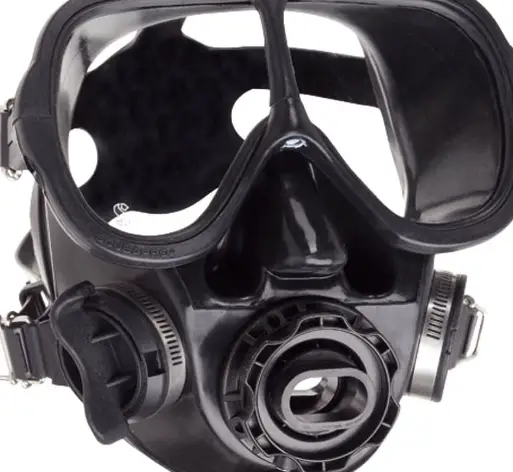
It features separate compartments for the nose and mouth, and easy to use adjustment buckles to keep the diving mask secure and comfortable at all times. It is easy to add an underwater communications system, and the snug two-compartment design makes this mask a popular choice for those diving in contaminated environments.
The design of the full-face scuba mask means that divers cannot breathe through their nose, unlike with some other full-face masks. The trade-off here is that the mask is easier to equalize than the average full-face mask.
This diving mask offers a good compromise between the comfort of a full-face design and the ease of use of a standard mask.
OTS Spectrum Full Face Mask
The OTS Spectrum is a small and lightweight mask with a clear lens and a double seal. It will fit most people whether they have a small or a large face.
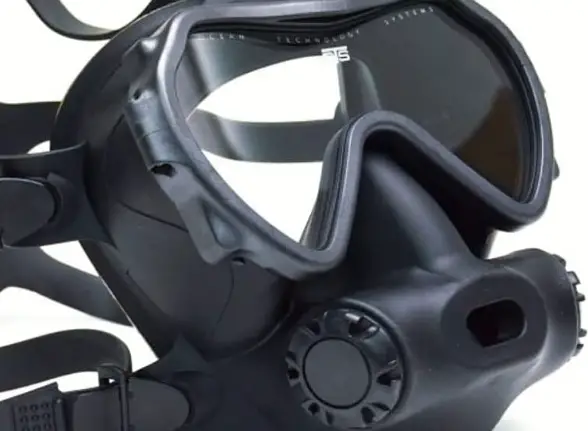
The mask is easy to equalize simply by pinching your nose, and it offers warmth and comfort in cool water. The regulator is not supplied, but the design should fit most full-face regulators.
This is an affordable full-face mask designed for recreational divers. It is a good choice for those who are looking to test out the full-face design for the first time.
It holds a seal well, and it allows you to talk to your partner under-water with ease. One downside of the mask is that you will need to stay on the air while wearing the mask; there is no surface valve supplied.
For people who remove their full-face scuba mask and regulator while on the surface, this may not be an issue. Overall, the mask is cost-effective, no-frills, and suitable for most recreational divers.
Ocean Reef Neptune Space G Divers Full Face Mask
The Ocean Reef Neptune Space G Divers Full Face Mask is a robust diving mask. It comes with a second stage regulator, a low-pressure hose, and a diver adjustable flow control knob.
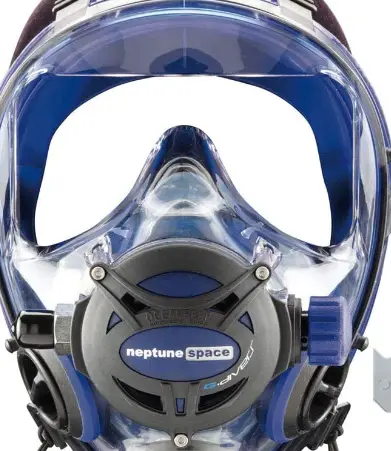
This large mask offers a good viewing area and is a comfortable fit for most people. The head strap ensures that the pressure from the weight of the mask is distributed evenly. There are six straps in the harness, which will keep the mask securely in place and ensure minimum movement.
The visor is made of transparent polycarbonate and is designed to sit close to the face and to offer a good peripheral vision. The polycarbonate has a visible light transfer of 92%.
The mask can be fitted with communication devices and is suitable for recreational use and for some commercial diving. However, the manufacturer offers other commercial-grade masks for extreme conditions.
This is a positive pressure diving mask that is resistant to fogging, and that is easy to use. It is quite bulky and does require careful cleaning and maintenance. However, the improved visibility and comfort underwater make it worth the choice.
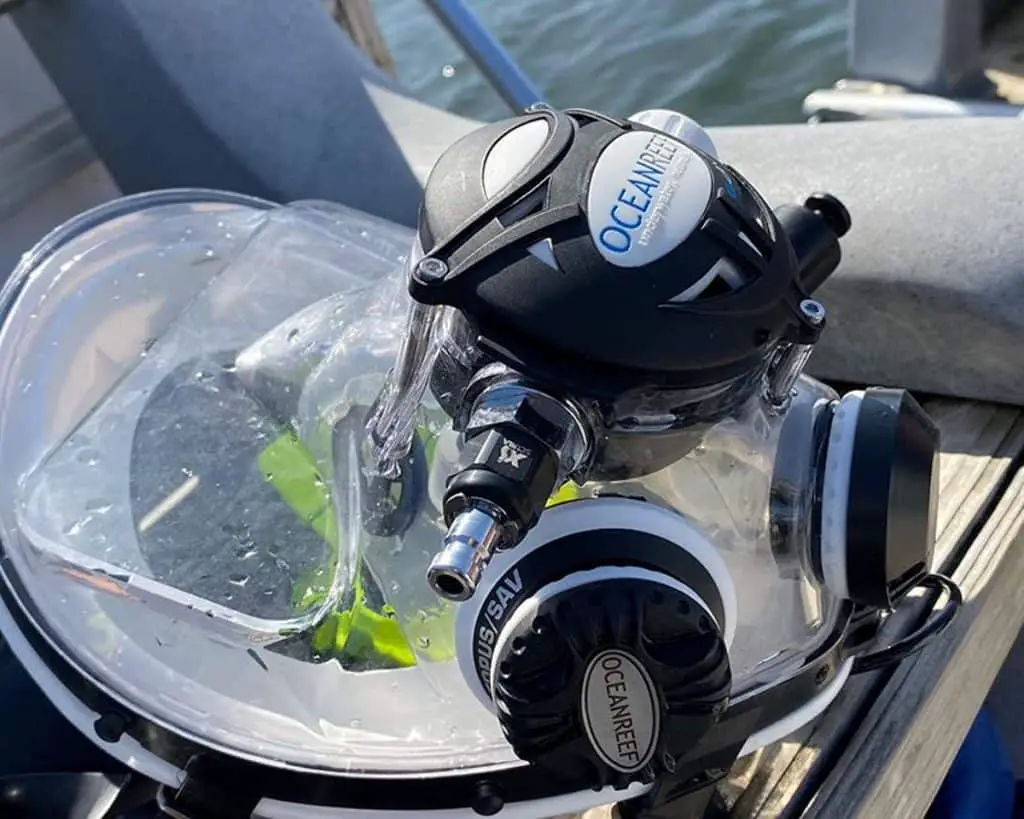
Conclusion
So, which is the best full-face mask? The OTS Guardian Full Face Mask is our winner because it offers a good compromise between cost and features.
It is a robust and well-made full-face scuba mask that will fit most people, and that offers good visibility in the water. The ABV valve is a welcome addition that even some of the more expensive masks in the list above lack, and the ability to breathe through your nose is something that divers will quickly come to appreciate once they have tried it for the first time.
There are other masks with more features, but it can be hard to justify the expense as a recreational diver. We believe that the OTS Guardian offers everything that most divers need, and is well worth the money.
This mask is good for technical and recreational divers. It may not suit those diving in extreme conditions, but OTS produces commercial masks for that purpose.
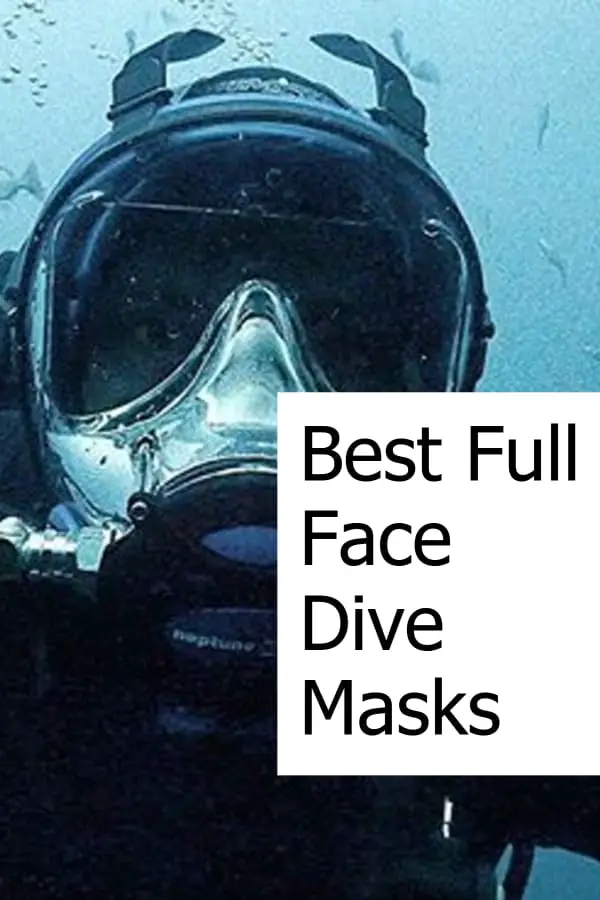
Update for 2019
There have been minor changes to the list for 2019. The Ocean Reef Predator T Divers FFM is still available but it’s hard to find online. The simple reason for that is that it’s a mask that’s designed for technical diving under extreme conditions. The price reflects that and as such recreational divers don’t choose that mask.
We have therefore taken it off the list and replaced it with the Draeger Panorama Nova Dive Sport that fits better for recreational diving. Both in quality and price.
For your reference, we left our take on the Ocean Reef Predator T Divers FFM below.
Ocean Reef Predator T Divers FFM
The Ocean Reef Predator T Divers FFM is designed for use by technical divers and is intended for those who dive in extreme conditions. The max is nitrox compatible up to 40%, which is classed as the recreational limit. This diving mask is suitable for use with glue-in corrective lenses for those who have vision issues. It is sold as one-size fits most (for medium to large faces, with a weight recommendation of 110lbs+) and comes with a surface air valve, but no quick connect/disconnect attachment.
This dive mask is well made, and the straps are easy to adjust. The 3-D equalization system promises to make it easier to clear the mask compared to other full-face designs. The directional exhaust valve is a nice touch, too, encouraging bubbles to flow away from the comms unit and to keep your view unobstructed. Purging the mask is done via an easy to access button, and the visor has a large visual field, with a visible light transfer of 92%, allowing you to see clearly even when deep underwater. This particular model was designed by Ocean Reef in association with Team Blue Immersion Dahab, and combines the technical diving experience of Team Blue with the robust design and many years of equipment manufacturing experience of Ocean Reef, to produce a recreational dive mask suitable for diving in difficult conditions.
